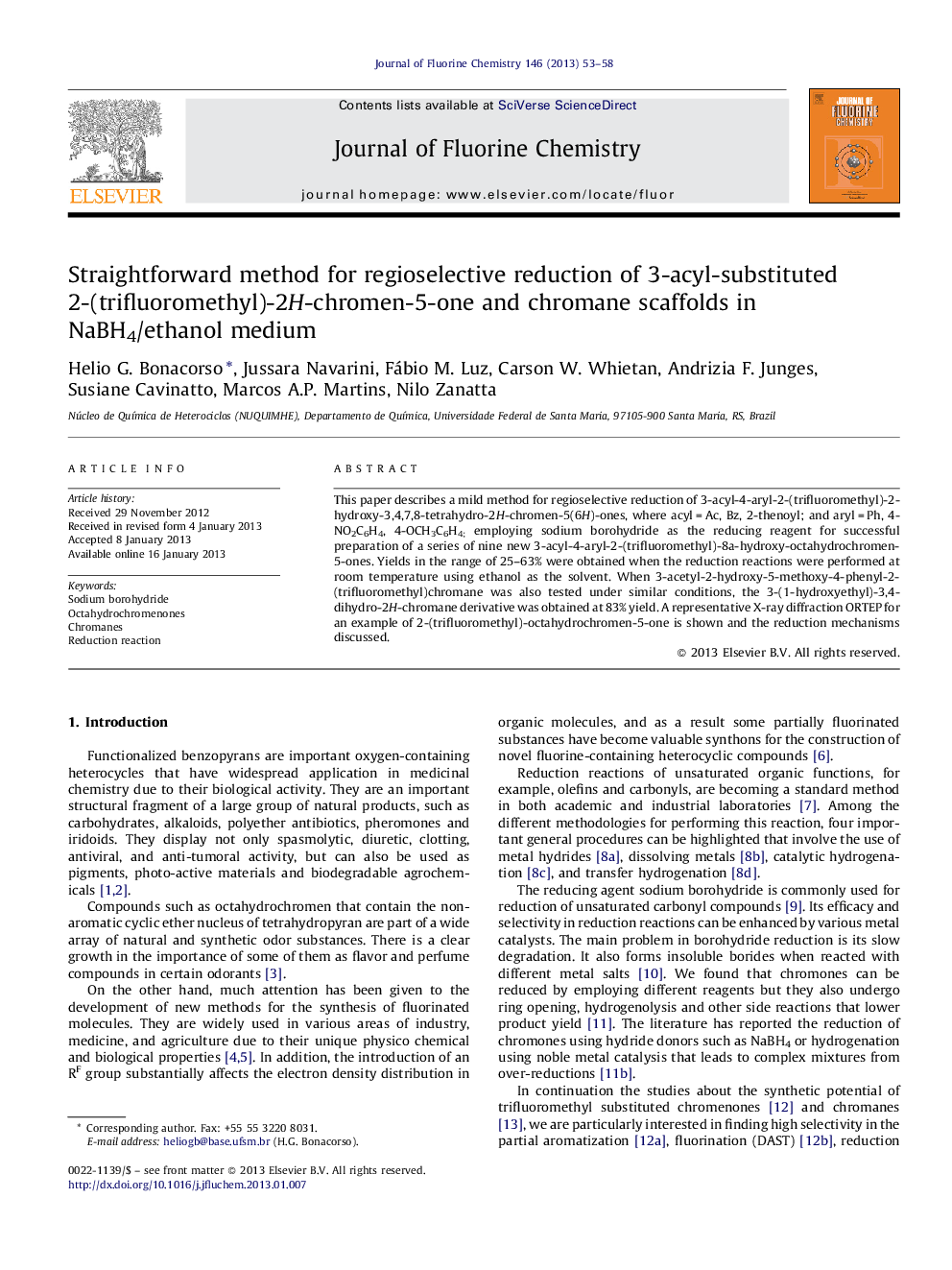| Article ID | Journal | Published Year | Pages | File Type |
|---|---|---|---|---|
| 1314780 | Journal of Fluorine Chemistry | 2013 | 6 Pages |
This paper describes a mild method for regioselective reduction of 3-acyl-4-aryl-2-(trifluoromethyl)-2-hydroxy-3,4,7,8-tetrahydro-2H-chromen-5(6H)-ones, where acyl = Ac, Bz, 2-thenoyl; and aryl = Ph, 4-NO2C6H4, 4-OCH3C6H4; employing sodium borohydride as the reducing reagent for successful preparation of a series of nine new 3-acyl-4-aryl-2-(trifluoromethyl)-8a-hydroxy-octahydrochromen-5-ones. Yields in the range of 25–63% were obtained when the reduction reactions were performed at room temperature using ethanol as the solvent. When 3-acetyl-2-hydroxy-5-methoxy-4-phenyl-2-(trifluoromethyl)chromane was also tested under similar conditions, the 3-(1-hydroxyethyl)-3,4-dihydro-2H-chromane derivative was obtained at 83% yield. A representative X-ray diffraction ORTEP for an example of 2-(trifluoromethyl)-octahydrochromen-5-one is shown and the reduction mechanisms discussed.
Graphical abstract▶ A mild and straightforward method using NaBH4/ethanol medium for the synthesis of a series of new 3-acyl-4-aryl-2- (trifluoromethyl)-8a-hydroxy-octahydrochromen-5-ones from regioselective reduction reactions of tetrahydro-2H-chromen-5(6H)-ones, is described.Figure optionsDownload full-size imageDownload as PowerPoint slideHighlights► Reduction reaction of tetrahydro-2H-chromenones with NaBH4 is successful carried-out. ► Regioselective synthesis of trifluoromethylated octahydrochromenones and chromanes. ► Reduction procedure with an unexpected result and easy reaction workup. ► Reactions can be conducted in a eco-friendly medium ethanol in yields up to 83%. ► The chemical reduction mechanism is presented, discussed and clarified.
